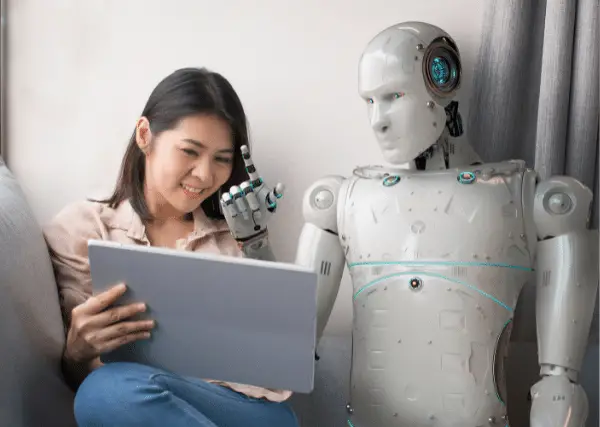Passing the GED Math test is no small feat. Fractions, algebra, geometry—these concepts don’t always come easy, and for many, a little extra help is necessary. But in today’s tech-driven world, the big question is: What kind of help works best?
Should students rely on AI-powered tutoring systems, or is traditional, face-to-face tutoring still the gold standard?
There’s no one-size-fits-all answer. Each method has its strengths, weaknesses, and unexpected twists. So, let’s dive deep into this battle of human versus machine.
Traditional Tutoring: The Human Touch in Learning
For decades, traditional tutoring has been the go-to solution for students struggling with math. It’s personal, adaptable, and—most importantly—human. A good tutor can read body language, detect frustration, and adjust explanations accordingly.
Strengths of Traditional Tutoring
- Immediate Feedback and Clarification: When a student stares blankly at a quadratic equation, a tutor notices. They rephrase, draw diagrams, or relate the problem to real life. AI might generate explanations, but it won’t always notice that “huh?” look at a student’s face.
- Motivation and Emotional Support: Let’s face it: math anxiety is real. A tutor can encourage, reassure, and push students past their doubts. A machine? It might spit out “Try again,” but it won’t say, “You got this, just breathe.”
- Customized Pacing: Some students grasp geometry in minutes, while others need multiple sessions. A tutor adjusts the pace on the fly, focusing more on problem areas rather than rushing through a preset curriculum.
- Real-Life Applications: Ever heard a tutor say, “Let’s think about this like a pizza”? Traditional tutors often use creative, everyday examples to make abstract math concepts more relatable. AI? Not so much.
If you prefer one-on-one guidance and real-time explanations, working with a math tutor Orlando can provide personalized instruction to help you master challenging GED math concepts.
Weaknesses of Traditional Tutoring
- Cost: Private tutors can be expensive, ranging from $30 to $100 per hour. For long-term help, that adds up quickly.
- Availability: Finding the right tutor isn’t always easy. Schedules may not align, and quality varies widely.
- Limited Resources: A tutor may have deep knowledge but lacks the vast data banks AI can pull from.
AI-Powered Tutoring: The Smart Revolution
AI-driven tutoring platforms, like Khan Academy, have made personalized learning more accessible than ever. At the same time, AI solver math allows you to speed up routine calculations. You can also use the AI solver app to deeply analyze a problem and study different solution methods.
If you need to study an example in detail or just quickly calculate a formula, an AI helper is what you need. AI has a much wider application than you think.
Strengths of AI Tutoring
- 24/7 Availability: Midnight cram session? No problem. AI never sleeps, making it ideal for students with unpredictable schedules.
- Instant Solutions and Step-by-Step Explanations: Stuck on a problem? AI can break it down step by step, often with interactive visual aids. This is particularly useful for self-motivated learners.
- Adaptive Learning Paths: Many AI systems analyze mistakes and adjust difficulty levels automatically. Struggling with exponents? AI will throw more exponent problems at you until you get the hang of it.
- Cost-Effective: Compared to private tutors, AI tutoring is often free or subscription-based, costing significantly less than weekly in-person sessions.
- Data-Driven Progress Tracking: AI tracks every mistake, every success, and every skipped problem, creating personalized reports. Tutors rely on memory and notes; AI relies on raw data.
Weaknesses of AI Tutoring
- Lack of Emotional Support: AI won’t notice frustration, boredom, or self-doubt. It just keeps going.
- One-Size-Fits-Most Explanations: If a student doesn’t understand an AI-generated explanation, they’re stuck clicking “explain differently” until they find one that makes sense.
- No Real-World Adaptability: AI can teach formulas but doesn’t improvise the way a tutor might.

What Do the Numbers Say?
Studies provide some insight into the battle. A 2021 study by the National Bureau of Economic Research found that students using AI-based tutoring systems improved their math scores by 12% over three months.
However, a separate study from the University of Chicago showed that students working with human tutors improved by nearly 25% in the same time frame.
AI works. But traditional tutoring still seems to yield better overall results—at least for now.
Which One Is Right for You?
The choice comes down to learning style, budget, and personal preference.
- Struggling with motivation? A human tutor is likely the better option.
- On a tight budget? AI-based platforms provide excellent support at little to no cost.
- Need flexibility? AI tutoring is accessible anytime, anywhere.
- Prefer human interaction? Traditional tutoring wins.
The Future: A Hybrid Approach?
Maybe it’s not AI vs. traditional tutoring but rather AI + traditional tutoring. Many educators believe the future lies in blending the two: using AI for practice and reinforcement while relying on human tutors for deep learning and emotional support.
The GED Math test isn’t getting easier. But with the right mix of technology and human guidance, passing it might just become a little less daunting.

